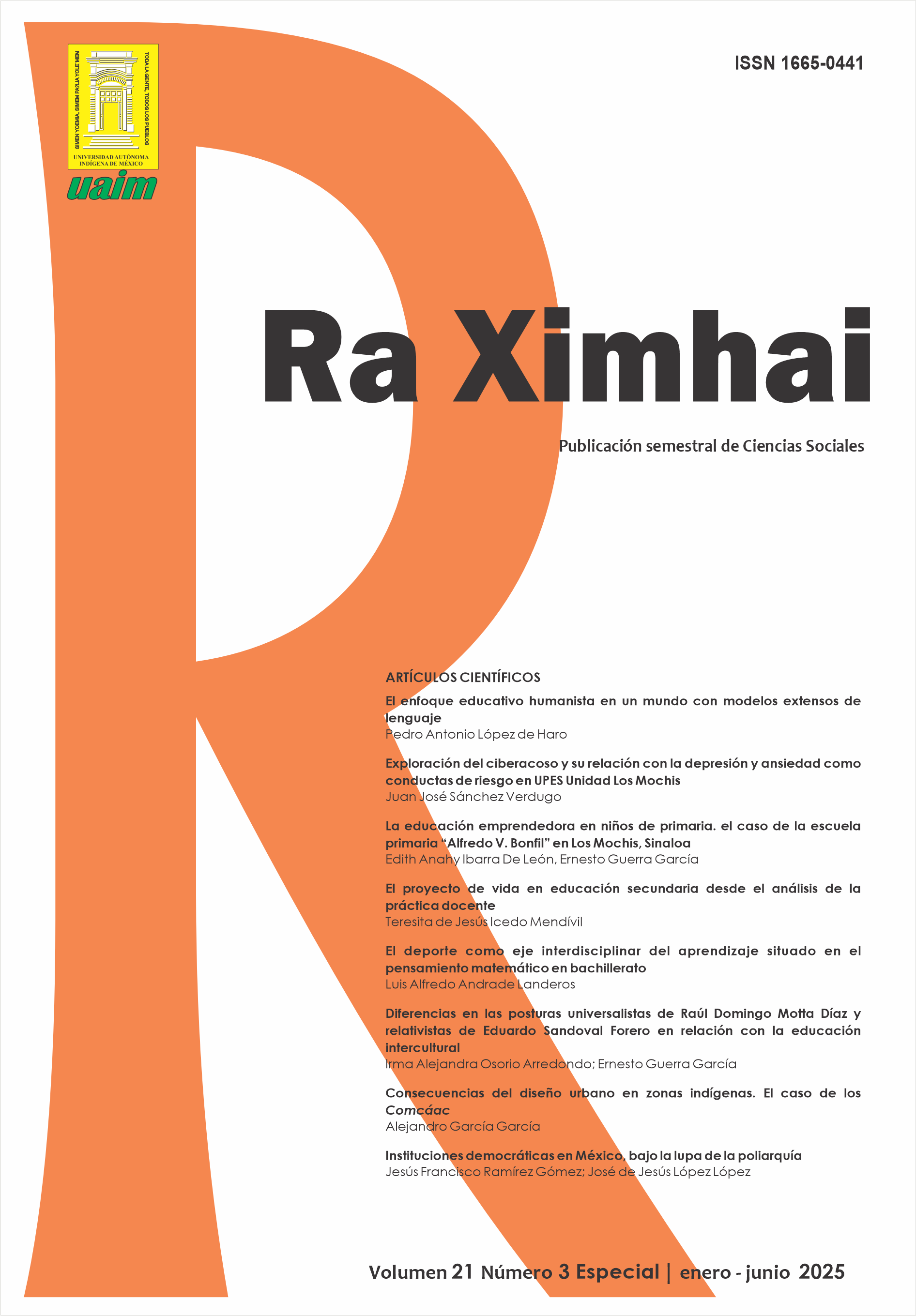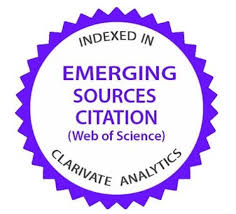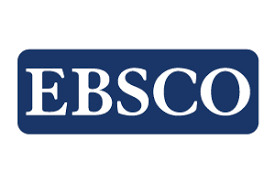Sports as an interdisciplinary axis of learning located in mathematical thinking in high school
DOI:
https://doi.org/10.35197/rx.15.05.2025.05.laKeywords:
transdisciplinarity, mathematical thinking, high schoolAbstract
This research assesses the relationship between sport and mathematical thinking, allowing us to understand how this integration is perceived, valued and experienced by the graduates of the Centro de Bachillerato Tecnológico Agropecuario 116 (CBTa 116), generation 2020–2023.
Mathematical thinking is an area of knowledge in education that is taught from the basic to the higher level, it is fundamental for problem solving, the development of critical, logical, reflective, analytical and conclusive skills.
Physical-sports activities are recognized for their multiple benefits, including disease prevention and improved overall well-being. The inclusion of sports in upper secondary education is essential to create an environment that favors positive interactions and integral development, thus contributing to the formation of healthier students who are more committed to their environment.
In this study, the mixed research method was applied, carrying out a probabilistic sampling for convenience derived from the contact limitations of the graduates, applying a survey to 49 of 72 as a method of quantitative data collection representing 68% of the population, on the other hand, the technique of observation of the activities carried out was used for the complementary thematic analysis by the qualitative method.
Considering the taste and motivation that students had when applying these interdisciplinary strategies, there were percentages above 70%, mostly with a very high and high rating, thus showing the relevance of incorporating physical-sports activities as a teaching strategy in situated learning.
Downloads
References
Borromeo Ferri, R. (2019). Educación matemática interdisciplinaria en la escuela - ejemplos y experiencias. Revista Académica UCMaulea. 57. 25-33.
https://portal.amelica.org/ameli/jatsRepo/600/6002853002/6002853002.pdf
Diario Oficial de la Federación [DOF] (2024). ACUERDO número 09/05/24 que modifica el diverso número 09/08/23 por el que se establece y regula el Marco Curricular Común de la Educación Media Superior.
https://dof.gob.mx/nota_detalle.php?codigo=5729564&fecha=05/06/2024#gsc.tab=0
Diario Oficial de la Federación [DOF] (2022). ACUERDO número 17/08/22 por el que se establece y regula el Marco Curricular Común de la Educación Media Superior. https://www.dof.gob.mx/nota_detalle.php?codigo=5663344&fecha=02/09/2022#gsc.tab=0
Diario Oficial de la Federación [DOF] (2023). Anexo del ACUERDO número 09/08/23. Marco Curricular Común de la Educación Media Superior. https://www.dof.gob.mx/2023/SEP/ANEXO_ACUERDO_MCCEMS.pdf
Dirección General de Educación Tecnológica y Ciencias del Mar [DGETAyCM] (2024). Estructura curricular del plan de estudios de la DGETAyCM, DGETI y CECyTEs. https://dgetaycm.sep.gob.mx/storage/recursos/2024/06/o6Kl8OiJxI-Estructura%20Curricular%202024.pdf
Hernández González, O. (2021). Aproximación a los distintos tipos de muestreo no probabilístico que existen. Revista Cubana de Medicina General Integral. 2021. 37(3). 1-3. http://scielo.sld.cu/pdf/mgi/v37n3/1561-3038-mgi-37-03-e1442.pdf
Hernández-Sampieri, R., Fernández Collado, C., & Baptista Lucio, P. (2014). Metodología de la investigación. (6ta. ed), México. Mc Graw Hill Education. https://drive.google.com/file/d/1Fjufmi0oGY4Zs8EajFiAJYNT2qoecH4k/view
López Ocampo, N.A., Álzate López, L.F., Echeverri Llano, M. y Domínguez Rojas, A.L. (2021). Práctica pedagógica y motivación desde el aprendizaje situado. Revista Tesis Psicológica, 16 (1), pp. 178-201. https://www.redalyc.org/journal/1390/139072247010/139072247010.pdf
Litardo-Muñoz, A. (2023). Las estrategias didácticas y el aprendizaje de las matemáticas en educación general básica. CIENCIAMATRIA, 9(2), 477-491. https://doi.org/10.35381/cm.v9i2.1191
Rincón Hurtado, I. y García Zapata, A. (2021). Significado y contexto: comparación entre aprendizaje significativo y aprendizaje situado. Universidad Católica de Pereira. 1-32. http://hdl.handle.net/10785/9472
Rodríguez Torres, A.F., Rodríguez Alvea, J.C., Guerrero Gallardo, H.I., Arias Moreno, E.R., Paredes Alvear, A.E., Chávez Vaca, V.A. (2020). Beneficios de la actividad física para niños y adolescentes en el contexto escolar. Revista Cubana de Medicina General Integral. 36(2). 1-14. http://scielo.sld.cu/pdf/mgi/v36n2/1561-3038-mgi-36-02-e1535.pdf
Rubio Heras, C.E., Ávila Mediavilla, C.M., García Herrera, D.G. y Bravo Navarro (2020). Estrategias metodológicas de la educación física aplicadas al aprendizaje significativo de las matemáticas. Revista Polo del Conocimiento. 5 (11). 408-420. http://polodelconocimiento.com/ojs/index.php/es
Trillo, J.R. y Trillo F. (2021). Taxonomía y aplicaciones matemáticas a las ciencias del deporte. https://www.researchgate.net/profile/Jose-Trillo-3/publication/351250767_Taxonomia_y_aplicaciones_matematicas_a_las_ciencias_del_deporte/links/608d753f92851c490fae225c/Taxonomia-y-aplicaciones-matematicas-a-las-ciencias-del-deporte.pdf
Downloads
Published
How to Cite
Issue
Section
License
Copyright (c) 2025 Luis Alfredo Andrade Landeros

This work is licensed under a Creative Commons Attribution-NonCommercial 4.0 International License.
Usted es libre de:
- Compartir — copiar y redistribuir el material en cualquier medio o formato
- Adaptar — remezclar, transformar y construir a partir del material
- La licenciante no puede revocar estas libertades en tanto usted siga los términos de la licencia
Bajo los siguientes términos:
- Atribución — Usted debe dar crédito de manera adecuada , brindar un enlace a la licencia, e indicar si se han realizado cambios . Puede hacerlo en cualquier forma razonable, pero no de forma tal que sugiera que usted o su uso tienen el apoyo de la licenciante.
- NoComercial — Usted no puede hacer uso del material con propósitos comerciales .
- No hay restricciones adicionales — No puede aplicar términos legales ni medidas tecnológicas que restrinjan legalmente a otras a hacer cualquier uso permitido por la licencia.








